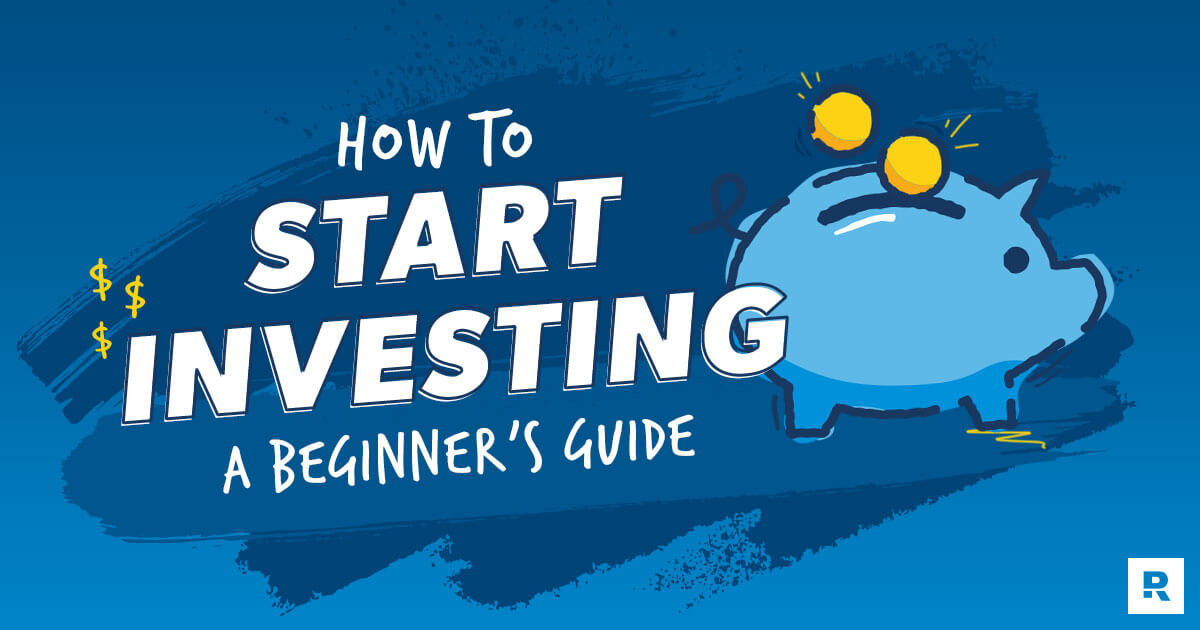Learning how to invest as a beginner trader is a powerful step towards building wealth, achieving financial security, and reaching your long-term financial goals. For many beginners, the world of investing can seem intimidating and complex, but with the right guidance and knowledge, anyone can become a successful investor.
In this guide, we’ll break down the basics of investing and provide you with a step-by-step approach to get started. Whether you’re looking to save for retirement, buy a home, or simply grow your wealth, investing is an essential strategy that can help you get there. We’ll cover everything from understanding the different types of investments to creating your first portfolio, and we’ll offer tips to help you avoid common mistakes along the way.
By the end of this post, you’ll have a solid foundation to start your investment journey with confidence. So, let’s dive in and explore how you can begin investing as a beginner trader and set yourself on the path to financial success.
Understanding the Basics
Key Terms
Stocks: Stocks represent ownership in a company. When you buy a stock, you become a shareholder and own a piece of that company. Stocks can appreciate in value and provide dividends, which are portions of the company’s profits paid to shareholders.
Bonds: Bonds are debt securities issued by corporations, municipalities, or governments. When you buy a bond, you are essentially lending money to the issuer in exchange for periodic interest payments and the return of the bond’s face value when it matures.
ETFs (Exchange-Traded Funds): ETFs are investment funds that trade on stock exchanges, much like stocks. They hold a diversified portfolio of assets, such as stocks, bonds, or commodities, and offer the benefits of diversification and lower fees compared to mutual funds.
Mutual Funds: Mutual funds pool money from many investors to purchase a diversified portfolio of stocks, bonds, or other securities. They are managed by professional fund managers and provide diversification, but typically come with higher fees than ETFs.
Risk vs. Reward
Investing always involves balancing risk and reward. Higher potential returns often come with higher risk. Here’s a simple way to understand this concept:
– Low-Risk Investments: These include savings accounts, government bonds, and certificates of deposit (CDs). They offer lower returns but are considered safer.
– Medium-Risk Investments: These include corporate bonds and dividend-paying stocks. They offer moderate returns with moderate risk.
– High-Risk Investments: These include stocks of small companies, high-yield bonds, and cryptocurrencies. They offer the potential for high returns but come with higher volatility and risk.
Understanding your risk tolerance is crucial. If you’re uncomfortable with the possibility of losing money, you might prefer lower-risk investments. Conversely, if you’re willing to take on more risk for the chance of higher returns, you might opt for higher-risk investments.
Importance of Having a Financial Plan
A financial plan is a comprehensive strategy that outlines your financial goals and the steps you need to take to achieve them. Here’s why having a financial plan is essential:
– Goal Setting: A financial plan helps you set clear, achievable financial goals, whether it’s saving for retirement, buying a house, or building an emergency fund.
– Budgeting: It helps you create a budget to manage your income and expenses, ensuring that you save and invest regularly.
– Investment Strategy: A financial plan includes an investment strategy tailored to your risk tolerance, time horizon, and financial goals. This helps you choose the right mix of assets for your portfolio.
– Tracking Progress: Regularly reviewing your financial plan allows you to track your progress towards your goals and make necessary adjustments.
By understanding the basics of investing, balancing risk and reward, and having a solid financial plan, you can set yourself up for success as a beginner trader.
Setting Your Investment Goals
Short-term vs. Long-term Goals
Short-term Goals: These are financial objectives you aim to achieve within a few months to a few years. Examples include saving for a vacation, building an emergency fund, or making a down payment on a car. For short-term goals, it’s important to focus on investments that are relatively low risk to ensure your funds are available when you need them. Options may include high-yield savings accounts, certificates of deposit (CDs), or short-term bonds.
Long-term Goals: These goals are set for a period of five years or more. Common long-term goals include saving for retirement, buying a home, or funding your children’s education. For long-term goals, you can afford to take on more risk since you have more time to ride out market fluctuations. Investments such as stocks, ETFs, and mutual funds are typically suitable for long-term goals due to their higher potential for growth.
How to Determine Your Risk Tolerance
Your risk tolerance is the degree of variability in investment returns that you are willing to withstand in your investment portfolio. Determining your risk tolerance involves assessing your comfort level with the possibility of losing money in the short term for the potential of greater returns in the long term. Here are a few steps to help you determine your risk tolerance:
1. Self-Assessment: Reflect on your financial situation, investment goals, and personality. Are you generally comfortable taking risks, or do you prefer to play it safe?
2. Investment Horizon Consider your investment horizon—the length of time you plan to hold an investment before needing the money. Longer horizons generally allow for greater risk-taking.
3. Financial Stability: Evaluate your current financial stability. If you have a stable income, emergency savings, and little debt, you may be more capable of handling higher-risk investments.
4. Risk Tolerance Questionnaires: Many financial institutions and online platforms offer questionnaires designed to gauge your risk tolerance. These can provide valuable insights and help tailor your investment strategy.
Importance of Diversifying Your Portfolio
Diversification involves spreading your investments across different asset classes, sectors, and geographies to reduce risk. The idea is to avoid putting all your eggs in one basket. Here’s why diversification is crucial:
– Reduces Risk: By investing in a variety of assets, you can mitigate the impact of a poor performance in any single investment. If one asset class or sector underperforms, others may perform well, balancing out your overall returns.
– Enhances Returns: Diversification can help you achieve more stable and potentially higher returns over time. A well-diversified portfolio can capture gains from different markets and asset classes.
– Protects Against Market Volatility: Different assets react differently to economic events. For example, while stocks might decline during a market downturn, bonds might perform better. Diversifying helps protect your portfolio against significant losses during volatile periods.
To diversify your portfolio effectively, consider including a mix of asset classes such as:
– Stocks: Provide growth potential but come with higher volatility.
– Bonds: Offer stability and regular income with lower risk.
– Real Estate: Can provide income and hedge against inflation.
– Commodities: Include assets like gold and oil, which can protect against inflation and economic downturns.
Additionally, within each asset class, diversify by investing in different sectors (e.g., technology, healthcare, finance) and regions (e.g., domestic and international markets).
Setting clear investment goals, understanding your risk tolerance, and diversifying your portfolio are fundamental steps in building a successful investment strategy as a beginner trader. By following these principles, you can create a balanced and resilient portfolio tailored to your financial needs and objectives.
Choosing the Right Investment Platform
Criteria for Selecting a Platform
When choosing an investment platform, it’s important to consider several factors to ensure it meets your needs as a beginner trader. Here are key criteria to look for:
- Fees:
– Commission Fees: Some platforms charge fees per trade, while others offer commission-free trading.
– Account Fees: Look out for maintenance fees, inactivity fees, and other charges.
– Expense Ratios: These are fees associated with mutual funds and ETFs; lower ratios can save you money in the long run.
2. User Interface:
– Ease of Use: The platform should be intuitive and easy to navigate, especially for beginners.
– Mobile App: A good mobile app allows you to manage your investments on the go.
– Educational Resources: Look for platforms that offer tutorials, webinars, and articles to help you learn.
3. Tools and Features:
– Research Tools: Access to stock screeners, market analysis, and real-time data can help you make informed decisions.
– Automated Investing: Features like robo-advisors can create and manage a diversified portfolio for you based on your risk tolerance and goals.
– Customer Support: Reliable customer support can be crucial when you encounter issues or have questions.
4. Account Types:
– Variety: Ensure the platform offers the types of accounts you need, such as individual brokerage accounts, IRAs, or custodial accounts.
– Minimum Deposit: Some platforms require a minimum deposit to open an account, so choose one that fits your budget.
5. Security:
– Regulation: Make sure the platform is regulated by reputable financial authorities.
– Insurance: Check if the platform offers insurance protection for your investments through programs like SIPC (Securities Investor Protection Corporation).
Review of Popular Platforms for Beginner Traders
1. Robinhood:
– Pros: Commission-free trades, user-friendly interface, and a straightforward mobile app.
– Cons: Limited research tools and customer support.
– Best For: Beginners who want a simple, cost-effective way to start investing.
2. E*TRADE:
– Pros: Comprehensive research tools, educational resources, and robust customer support.
– Cons: Higher fees for some account types and services.
– Best For: Beginners who want access to a wide range of investment tools and educational content.
3. TD Ameritrade:
– Pros: Extensive research tools, educational content, and strong customer support.
– Cons: Slightly complex interface for absolute beginners.
– Best For: Beginners who are serious about learning and accessing professional-grade tools.
4. Fidelity:
– Pros: No account fees or minimums, extensive research tools, and excellent customer support.
– Cons: Some may find the platform slightly overwhelming at first.
– Best For: Beginners looking for a long-term investment partner with a full range of services.
5. M1 Finance:
– Pros: Automated investing, no commission fees, and flexible portfolio customization.
– Cons: Limited research tools and no direct customer support.
– Best For: Beginners who prefer a hands-off approach with automated investing.
Choosing the right investment platform is crucial for your success as a beginner trader. By considering factors such as fees, user interface, tools, and features, you can find a platform that suits your needs and helps you achieve your financial goals.
Creating Your First Portfolio
Steps to Create a Diversified Portfolio
Creating a diversified investment portfolio is a key step in managing risk and achieving stable returns. Here’s how to start:
1. Define Your Investment Goals and Timeline:
– Determine what you’re investing for, whether it’s retirement, buying a home, or another goal. Your goals and the time you have to achieve them will influence your investment strategy.
2. Assess Your Risk Tolerance:
– Understand how much risk you’re comfortable taking on. This will help you decide the mix of assets that suits your comfort level and financial goals.
3. Choose Asset Classes:
– Depending on your risk tolerance and goals, select a mix of asset classes. Common classes include stocks, bonds, real estate, and commodities. Each has different levels of risk and potential returns.
4. Diversify Within Asset Classes:
– Don’t just stop at selecting asset classes; diversify within them as well. For example, in stocks, consider different sectors (technology, healthcare, etc.) and market capitalizations (large-cap, mid-cap, small-cap). For bonds, consider varying maturities and issuers (government, corporate, municipal).
5. Select Investments:
– Choose individual stocks, bonds, ETFs, or mutual funds that align with your asset allocation. For beginners, ETFs and mutual funds are often recommended because they provide instant diversification.
6. Regularly Review and Rebalance:
– Monitor your portfolio’s performance at regular intervals and rebalance as needed to maintain your desired asset allocation. This often involves buying or selling assets to align your portfolio with your target allocation.
Importance of Asset Allocation
Asset allocation is the process of dividing your investments among different asset categories. This decision has a major impact on your portfolio’s risk and return. Here’s why it’s important:
– Risk Management: Proper asset allocation can help you manage risk by spreading your investments across assets that have different levels of risk and returns. This diversification can reduce the volatility of your portfolio.
– Performance: Different asset classes perform differently under various economic conditions. By diversifying your investments, you can potentially increase your chances of improving returns under different market scenarios.
– Aligns with Goals: By aligning your asset allocation with your financial goals and timeline, you ensure that your investment strategy is appropriately aggressive or conservative.
Tips for Balancing Your Portfolio Over Time
Maintaining balance in your portfolio is crucial as it can drift over time due to differing returns from various assets. Here are tips to keep your portfolio in line:
1. Schedule Regular Reviews:
– Set a regular schedule to review your portfolio (e.g., quarterly, semi-annually). This helps you catch and address any deviations from your target allocation.
2. Rebalance as Necessary:
– If certain investments have grown to constitute a larger portion of your portfolio than intended, consider selling some of these assets to reinvest in underweighted areas. This helps maintain your original risk level and strategy.
3. Consider Automatic Rebalancing:
– Some investment platforms and advisors offer automatic rebalancing services that can adjust your portfolio periodically without your direct intervention.
4. Adjust for Life Changes:
– As your financial situation and goals change, adjust your portfolio accordingly. For example, as you get closer to retirement, you might shift more towards bonds and less towards stocks to reduce risk.
5. Stay Informed:
– Keep yourself educated about the markets and economic trends. Understanding what’s happening in the market can help you make informed decisions about rebalancing and adjusting your portfolio.
By following these guidelines, you can create and maintain a diversified investment portfolio that aligns with your financial goals and adapts to changes over time, setting a strong foundation for your investing journey.
Managing Your Investments
How to Track Your Investments and Measure Performance
1. Use Investment Tracking Tools:
– Online Platforms and Apps: Many investment platforms offer built-in tracking tools to monitor your portfolio. Apps like Personal Capital, Mint, and Morningstar can help you track your investments across different accounts.
– Spreadsheets: Creating a custom spreadsheet using tools like Microsoft Excel or Google Sheets can help you track investments manually, providing a personalized overview of your portfolio.
2. Set Benchmarks:
– Compare your portfolio’s performance against relevant benchmarks such as the S&P 500 for stocks or the Bloomberg Barclays U.S. Aggregate Bond Index for bonds. This helps you understand how your investments are performing relative to the market.
3. Review Statements Regularly:
– Regularly review account statements from your brokerage to keep an eye on your holdings, performance, and fees. Quarterly or monthly reviews can help you stay informed about your investment performance.
4. Consider Total Return:
– Total return includes capital gains, dividends, and interest. It provides a more comprehensive view of your investment performance.
When to Buy, Hold, or Sell
1. When to Buy:
– Undervalued Assets: Look for stocks or assets that are undervalued by the market, indicating potential for growth.
– Market Downturns: Consider buying during market downturns when prices are lower, but ensure the fundamentals of the investments remain strong.
– New Opportunities: Invest in new opportunities that align with your financial goals and risk tolerance.
2. When to Hold:
– Long-term Goals: If your investment is aligned with your long-term goals and continues to perform well, holding onto it may be the best strategy.
– Market Volatility: During periods of short-term market volatility, it’s often better to hold rather than make impulsive decisions based on market fluctuations.
– Strong Fundamentals: If the fundamentals of the investment remain strong and it fits well within your diversified portfolio.
3. When to Sell:
– Achieved Goals: Sell investments that have reached your financial goals or target price.
– Underperformance: If an investment consistently underperforms compared to its benchmark or your expectations, consider selling.
– Change in Fundamentals: Sell if there is a significant change in the fundamentals of the investment, such as declining earnings or a change in management that negatively impacts the company.
– Rebalancing Needs: Sell to rebalance your portfolio and maintain your desired asset allocation.
Rebalancing Your Portfolio
1. Set a Rebalancing Schedule:
– Decide how often you will rebalance your portfolio. Common intervals include quarterly, semi-annually, or annually. Some investors prefer to rebalance based on asset allocation thresholds rather than fixed time periods.
2. Identify Deviations:
– Monitor your portfolio to identify significant deviations from your target asset allocation. For example, if your target is 60% stocks and 40% bonds, but your portfolio has shifted to 70% stocks due to market gains, it’s time to rebalance.
3. Sell Overweight Assets:
– Sell assets that have grown beyond your target allocation. For instance, if stocks have grown too much, sell some stocks and use the proceeds to buy underweight assets like bonds.
4. Buy Underweight Assets:
– Use the proceeds from selling overweight assets to purchase underweight assets. This helps you maintain your desired asset allocation and manage risk.
5. Consider Tax Implications:
– Be mindful of the tax implications of selling investments. In taxable accounts, selling assets can trigger capital gains taxes. Consider tax-efficient strategies like tax-loss harvesting or rebalancing within tax-advantaged accounts (e.g., IRAs or 401(k)s).
6. Automated Rebalancing:
– Some investment platforms offer automated rebalancing services. These platforms automatically adjust your portfolio to maintain your target asset allocation, saving you time and effort.
By effectively tracking your investments, knowing when to buy, hold, or sell, and regularly rebalancing your portfolio, you can manage your investments to achieve your financial goals while minimizing risk and maximizing returns.
Common Mistakes to Avoid
Emotional Investing
1. Fear and Greed:
– Emotional investing often leads to buying high and selling low due to fear and greed. Fear of missing out (FOMO) can push investors to buy assets at their peak, while panic during market downturns can lead to selling at a loss.
2. Short-term Reactions:
– Reacting to short-term market fluctuations instead of focusing on long-term goals can result in poor investment decisions. Markets naturally experience ups and downs, and reacting impulsively can disrupt your investment strategy.
3. Lack of Discipline:
– Sticking to a disciplined investment strategy is crucial. Create a well-thought-out plan based on your goals, risk tolerance, and time horizon, and resist the urge to deviate from it based on emotions.
How to Avoid:
– Set clear investment goals and a long-term plan.
– Regularly review and remind yourself of your investment strategy.
– Avoid checking your portfolio too frequently to minimize emotional reactions.
Lack of Research
1. Following Trends Blindly:
– Investing based on trends, hot tips, or hearsay without understanding the underlying fundamentals can lead to poor investment choices. Not all popular investments are suitable for your goals and risk tolerance.
2. Ignoring Fundamentals:
– Failing to research a company’s financial health, management team, industry position, and growth prospects can result in investing in overvalued or failing companies.
3. Overlooking Risks:
– Each investment carries inherent risks. Without proper research, you might not fully understand the potential downsides of an investment, leading to unexpected losses.
How to Avoid:
– Conduct thorough research before making any investment. Look into the company’s financial statements, industry trends, and economic factors.
– Use reputable sources of information and diversify your research to get a well-rounded view.
– Consider consulting financial advisors or using professional research tools.
Overtrading
1. High Transaction Costs:
– Frequent buying and selling can lead to high transaction costs, including commissions and taxes, which can significantly reduce your overall returns.
2. Increased Risk:
– Overtrading often leads to chasing short-term gains, which can increase the risk of making poor investment decisions. It can also result in a lack of consistency in your investment strategy.
3. Emotional Stress:
– Constantly monitoring the market and making frequent trades can cause emotional stress and burnout, leading to irrational decisions.
How to Avoid:
– Develop a long-term investment strategy and stick to it, focusing on steady growth rather than quick profits.
– Limit the frequency of your trades. Set rules for when to buy and sell based on your investment goals and strategy, not on market noise.
– Utilize automated investment tools or robo-advisors that can help manage your portfolio with fewer trades.
By avoiding these common mistakes, emotional investing, lack of research, and overtrading, you can enhance your chances of achieving your investment goals and building a successful portfolio over time. Staying informed, disciplined, and focused on long-term objectives are key principles to keep in mind as you navigate your investment journey.
Conclusion
Investing as a beginner trader may seem daunting, but with the right knowledge and tools, you can set yourself up for success. Here’s a quick recap of the key points we’ve covered:
1. Understanding the Basics: Get familiar with key investment terms, understand the concept of risk versus reward, and recognize the importance of having a financial plan.
2. Setting Your Investment Goals: Differentiate between short-term and long-term goals, determine your risk tolerance, and understand the importance of diversifying your portfolio.
3. Choosing the Right Investment Platform: Select a platform based on fees, user interface, tools, and features that align with your needs.
4. Creating Your First Portfolio: Learn the steps to create a diversified portfolio, the importance of asset allocation, and tips for balancing your portfolio over time.
5. Managing Your Investments: Track your investments and measure performance, know when to buy, hold, or sell, and understand the process of rebalancing your portfolio.
6. Common Mistakes to Avoid: Stay aware of emotional investing, lack of research, and overtrading to protect your investments.
Investing is a powerful tool that can help you achieve financial freedom and reach your long-term goals. By taking the time to educate yourself and make informed decisions, you can confidently start your investment journey and build a secure financial future.
Call to Action
Don’t forget to subscribe to our newsletter for more tips, guides, and updates on smart investing strategies. Join our community of beginner traders and stay informed on the latest trends and opportunities in the investment world.
Subscribe to our newsletter and begin your path to financial success today!




